First dive of 2012: Catching up with old friends
 January 16, 2012
January 16, 2012
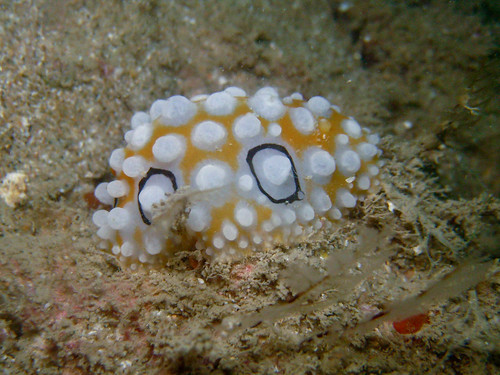
Phyllidia ocellata, a species of sea slug, a dorid nudibranch, a shell-less marine gastropod mollusk in the family Phyllidiidae.
When the tropical storm blew across the island on Saturday night, divers laid in their beds, quietly contemplating the conditions that we’d face out at sea on Sunday morning. The rain had stopped by the morning, and the sun had returned with a mean vengeance, and as we moved out from the docks the water appeared to be in not-to-bad conditions. In fact, I thought it looked good. As it turns out, looks can be rather deceiving.
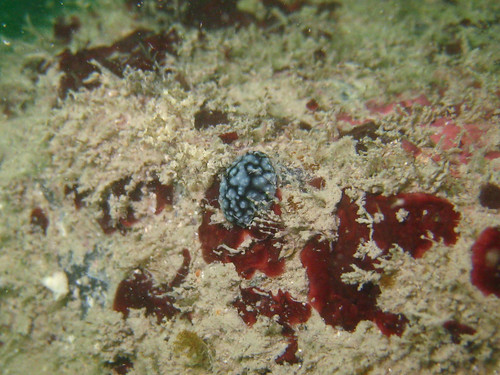
Another tiny Phyllidia sea slug. Common on tropical reefs throughout the Indo-West Pacific Ocean.
The water was freezing. If you dive outside of the equatorial region, you’re wondering what I’m talking about, well, it was freezing enough for us tropical people. We’re used diving in waters that can be likened to a nice, comfortable bath – say, 27 deg C. Today, it was something like 24. It is was slightly bordering on the, this-is-not-so-fun-anymore, side. But because we love Pulau Hantu’s reef so much, we sucked in our whines and descended shivering.
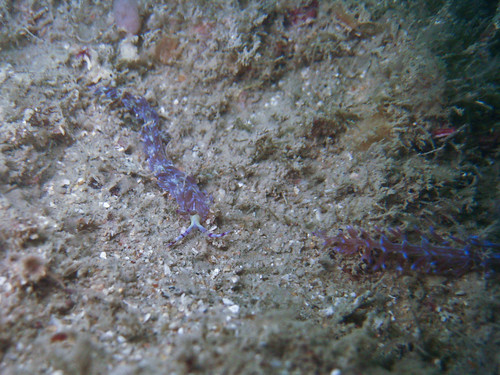
A pair of blue dragon nudibranchs (Pteraeolidia ianthina). These nudibranches have the ability to capture zooxanthellae and store them within its body. Here, the zooxanthellae get protection and in turn provides the nudibranch with much of the nutrients produced through photosynthesis. In addition, this nudibranch also eats hydroids.
The Ocean then decided to take us on a little party, flushing the reef with a series of conflicting currents. Again, not fun if you’re a new diver. But we persisted with our dive plans, and I led my two divers to see this awesome sponge structure. Cedric Sehetapy, one of our regular divers, really liked it and wanted to take a video, but was unable to keep his camera steady in the surging current, so we moved on. Sophie Martin, a first-timer in Singapore waters really managed to keep her steady in her first experience of low-visibility waters, unfortunately coupled with unfavorable currents. She was a real sport and even made a joke about it being the first time she’s swam through seaweed (we had to sick close to the shallow, where the sargassum seaweed grows, as the current was less challenging than in the deep, but still a workout). She thought it was kind of funny. Since we were in the shallow anyway, we started looking at the different type of snails, barnacles, Purple climber crabs, and oysters that inhibit the intertidal area. Both of them oohed and ahhed, much to my relief.
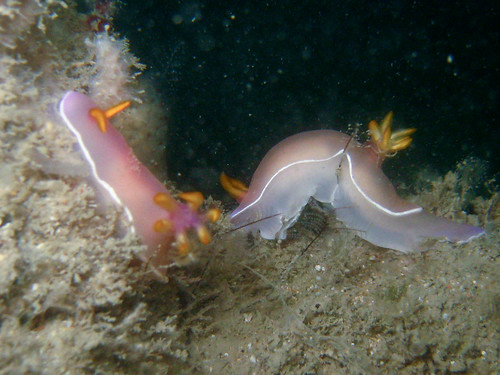
A pair of bullocki nudibranches were spotted near a ribbon of eggs – see link below for more photos.
The second dive was as cold as the first, but thankfully, the currents had quelled. We have many beautiful nudibranches at Pulau Hantu but none are quite as mesmerizing as the bullocki. We received a New Year bonus! A pair of bullockis and a ribbon of brightly-coloured yellow eggs!

Porcelain crab in Acropora coral
It was a real treat to find this colony of Acropora coral with a handful of Porcelain crabs. Porcelain crabs aren’t crabs at all and are actually related to hermit crabs and squat lobsters, and more distantly, true crabs. They are so-called because they are quite fragile animals, and will often shed their limbs to escape predators. Their large claws are used for territorial struggles, not for catching food. There was also an Acropora goby in the midst but as fast and skittish as they are, I was not able to get a picture.
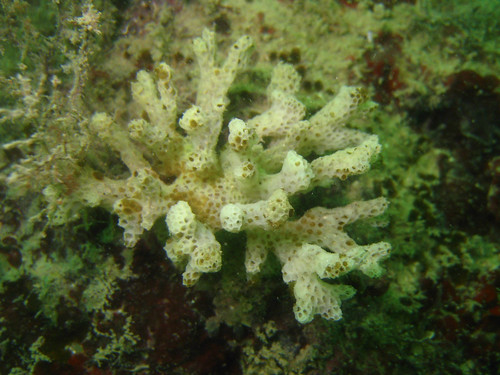
Coral bleaching
I also encountered a Serpent coral and this branching coral that appear to be bleaching.

Small reef octopus
To wrap it all up, and to reward us for our tenacity, this octopus was spotted with its eyes sticking out of a crevice. I quickly called Sophie over and she wasn’t quite sure what she was looking at, as you can tell from this picture, octopi are very good at camouflage! I brought my pointer close to it as I’ve learned from experience that they are extremely curious creatures. Keeping most of its body safe inside the crevice, it reached out one of its tentacles, then another, and another, and wrapped it around my pointer and gave a little tug! It’s quite strong for such a little creature. I waved my pointer in front of it again, and for the second time, it “shook” my pointer. I didn’t get to photograph this though as each time I put my camera forward while it had its tentacles out, it would retreat into its hole. So it was still quite cautious, and rightfully so! There are many larger carnivores on the reef that would like to make a meal out of a curious and bite-sized octopus. We haven’t seen an octopus at Hantu for a few months, so this first dive of 2012 as like catching up with an old friend for me. Other divers also saw winged-pipefish, cuttlefish and a juvenile seahorse, the latter has also not been sighted for several months!
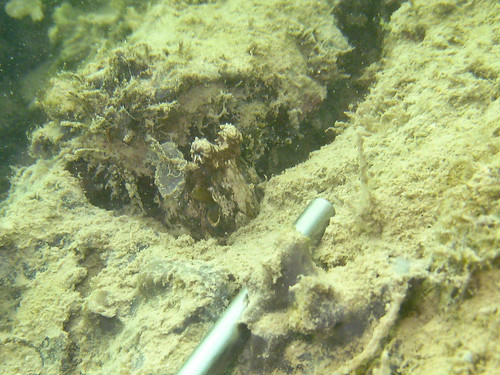
The octopus contemplates shaking my metal pointer
Visit our gallery to see more photos from this trip, and join our Facebook Page to see more amazing photos and videos of Singapore’s sea life first!
 Posted in
Posted in 



 content rss
content rss
COMMENTS